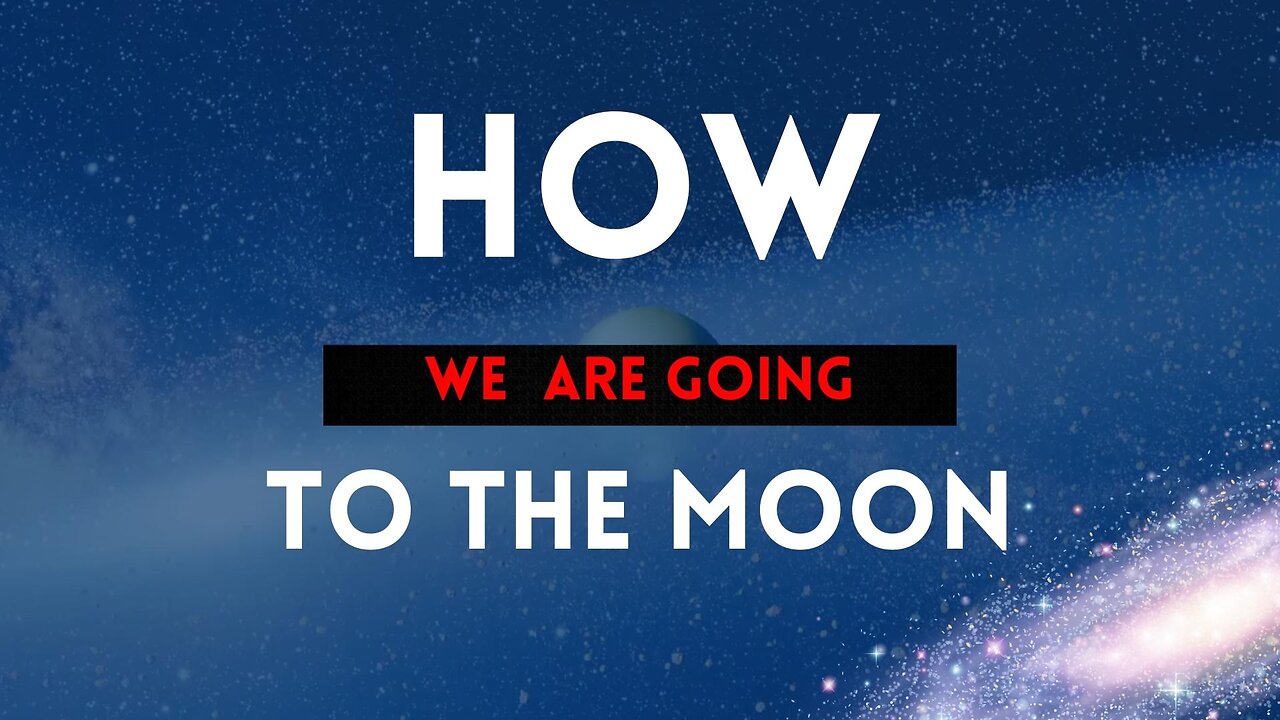Premium Only Content

To the moon and back | NASA's trip to space | Space travel
Have you ever wondered what it would be like to live on the Moon? How about exploring Mars and other planets in our solar system? Well, you’re not alone. NASA’s Artemis program is an ambitious plan to send humans back to the lunar surface and prepare for future missions to Mars and beyond. In this video, we’ll explain how Artemis works, what its goals are, and what challenges it faces. And we have a special guest narrator: Kelly Marie Tran, the actress who played Rose Tico in Star Wars: The Rise of Skywalker!
The Artemis program is named after the Greek goddess of the moon and the twin sister of Apollo, the god of the sun and the name of NASA’s first lunar landing program. Artemis aims to land the first woman and the first person of color on the Moon by 2024, as well as establish a sustainable human presence there by the end of the decade. To do this, NASA will use a new rocket called the Space Launch System (SLS), a new spacecraft called Orion, a new lunar outpost called the Gateway, and new commercial landing systems.
The SLS is the most powerful rocket ever built, capable of launching Orion and other payloads to deep space. It consists of a core stage with four RS-25 engines, two solid rocket boosters, and an upper stage with an RL10 engine. The SLS can carry up to 130 metric tons of cargo to low Earth orbit, or up to 45 metric tons to the Moon. The SLS will have different configurations depending on the mission, such as Block 1, Block 1B, and Block 2.
The Orion is a crewed capsule that can carry up to six astronauts to the Moon and beyond. It has a service module with a European-built propulsion system, a crew module with life support systems and a launch abort system, and a docking adapter for connecting to other spacecraft. The Orion can operate autonomously or in conjunction with the Gateway or other vehicles. The Orion can also re-enter Earth’s atmosphere at speeds up to 11 kilometers per second, or about 40 times faster than sound.
The Gateway is a small space station that will orbit the Moon and serve as a staging point for lunar landings and deep space exploration. It will have modules for habitation, communication, power generation, propulsion, docking, and science. The Gateway will be built with contributions from international partners such as ESA, JAXA, CSA, ISA, and ASA. The Gateway will also host robotic missions such as lunar rovers and sample return vehicles.
The Human Landing Systems (HLS) are commercial vehicles that will transport astronauts from the Gateway to the lunar surface and back. NASA has selected three companies to develop different concepts for the HLS: SpaceX, Dynetics, and Blue Origin. SpaceX’s Starship is a reusable spacecraft that can land vertically on the Moon and refuel using in-situ resources. Dynetics’ Human Landing System is a single-stage vehicle that can dock horizontally with Orion or Gateway and land on deployable legs. Blue Origin’s Integrated Lander Vehicle is a three-stage vehicle that consists of an ascent element, a descent element, and a transfer element.
The Artemis program will consist of several phases and missions that will test and demonstrate the capabilities of these systems. The first phase is called Artemis I, which will launch an uncrewed Orion around the Moon in late 2022. The second phase is called Artemis II, which will launch a crewed Orion around the Moon in late 2024. The third phase is called Artemis III, which will land two astronauts on the lunar south pole in late 2024. The fourth phase is called Artemis IV-VI, which will land four astronauts on different regions of the Moon between 2025 and 2027. The fifth phase is called Artemis VII-XIII, which will establish a permanent base on the Moon by 2030.
The Artemis program is not only about returning to the Moon, but also about preparing for future missions to Mars and beyond. By living and working on another world, we can learn how to survive in harsh environments, how to use local resources, how to conduct scientific research, how to cooperate with international partners, and how to inspire future generations of explorers. The Moon is our nearest neighbor in space, but it is also our gateway to the stars.
We hope you enjoyed this video about NASA’s Artemis program. If you want to learn more about it, you can visit NASA’s website at NASA.gov. And if you want to see more videos like this one, don’t forget to subscribe to our channel and hit the bell icon for notifications. Thanks for watching!
Tags: NASA, Artemis program, moon landing, space exploration, Kelly Marie Tran
-
 57:22
57:22
barstoolsports
12 hours agoHardest Puzzle Breaks Brains | Surviving Barstool S4 Ep. 8
169K7 -
 9:02:15
9:02:15
Dr Disrespect
16 hours ago🔴LIVE - DR DISRESPECT - MARVEL RIVALS - RANKED
328K56 -
 1:00:46
1:00:46
The StoneZONE with Roger Stone
7 hours agoFake News Attack on Tulsi Gabbard! | The StoneZONE w/ Roger Stone
45.5K18 -
 2:24:08
2:24:08
WeAreChange
10 hours agoElon Musk & Donald Trump: The Emergency Halt That Saved Us
73.9K58 -
 1:13:11
1:13:11
Flyover Conservatives
1 day agoWARNING! Is Bitcoin CIA-Controlled? – The Shocking Reality of Digital Assets - Clay Clark | FOC Show
30.5K7 -
 2:00:37
2:00:37
Space Ice
13 hours agoSpace Ice & Redeye Try To Figure Out Seagal's Most Incoherent Movie
111K2 -
 1:00:36
1:00:36
PMG
1 day ago $9.55 earned"Santa Trump is Giving Us Hope - But Will Johnson Stand Strong?"
89.3K14 -
 54:30
54:30
LFA TV
1 day agoThe German Strongman’s Arrival Is Imminent | Trumpet Daily 12.18.24 7PM EST
68K4 -
 2:04:11
2:04:11
Melonie Mac
10 hours agoGo Boom Live Ep 32! Soul Reaver Remastered!
56.1K10 -
 39:11
39:11
Sarah Westall
8 hours agoDigital Slavery and Playing with Fire: Money, Banking, and the Federal Reserve w/ Tom DiLorenzo
65.6K8